Today, to mark the end of students’ spring semester studying abroad in Perugia, Italy, the Umbra Institute hosted a number of events designed for students to reflect on what and how they learned during the past four months.
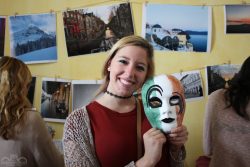
Photography, Ceramics, and Fresco: Art Show
The day started with an Art Show, featuring the work of photography, ceramics, and fresco students. The show was decorated with a bright, international display of photos. Ceramic masks, plates, and other items were on exhibit to demonstrate designs and methods that were learned during the semester; while ceramic coffee cups were being sold to raise funds for Perugia’s UNICEF chapter. Fresco students, who had worked on Villa Vallerosa (between Perugia and Rome), took pride in a slide show that photographically demonstrated their work toward revitalizing the villa through art.
Community Engagement Presentations
Students spent their afternoon sharing what they learned through various service-learning projects, community-based coursework, and seminar and practica courses.
- The Critical Disabilities: Seminar and Practicum course allowed Leah Crawford the chance to present her independent research project on fostering community and inclusion for people with disabilities. Leah shared that her conclusion provided for 4 keys to inclusion, defined as a combination of: social interaction, interdisciplinary engagement, participatory activities, and values-based collaboration.
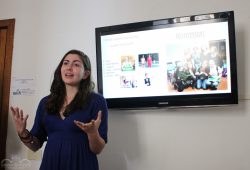
Lizzie Knudsen describes the importance of being flexible with lesson plans and teaching strategies - Introduction to Photography students shared their work with Re.Leg.Art, a small co-operative in Perugia that trains workers with special needs to make handmade leather goods. For the projects, students were tasked with using the concepts and techniques learned in class (such as depth of field, motion, exposure, and composition) to take pictures of Re.Leg.Art products using Perugia as a landscape. Julianne Arcamone commented on the project saying, “Techniques for advertisement photography are very different, the scene behind the product couldn’t be too distracting and we had to pay more attention to lighting and exposure.”
- Education in Italy: Seminar and Practicum students, after a semester of teaching in local elementary and high schools, shared their key take-away: be flexible. Each student described difficulties that can arise when teaching, such as preparing a PowerPoint and worksheets for a class that learns best through active, participatory learning. The lesson-learned was to “be flexible” when teaching and understand how to adapt to change at a moment’s notice, in order to engage students and provide an optimal learning environment.
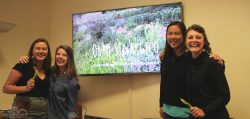
And the winner is…
After all presentations were complete, students voted for the most engaging and informative. The winner was the presentation done by the Sustainability and Food Production in Italy class.
Sustainability students presented their work with a local synergistic garden that also serves as a location for horticulture therapy for individuals with mental health challenges. The class shared the techniques used within the garden but focused on the positive affect that similar public spaces can have on a community. Sustainability students encouraged their peers to get active in their local community in ways that sustain both the environment and society.
This week’s reflection and community engagement activities will continue with:
- Creative Writing Readings featuring Italian Tales and Stories, A Taste for Knowledge, and Racconto Italiano (tonight),
- Archaeology Museum Tours (tomorrow), and
- Placemaking’s Neighborhood Event and Project Presentation (tomorrow).


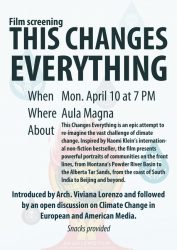 The screening was accompanied by a brief lecture by Viviana Lorenzo on climate change and the way it is generally presented by European and American media outlets.
The screening was accompanied by a brief lecture by Viviana Lorenzo on climate change and the way it is generally presented by European and American media outlets.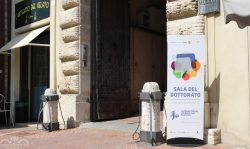 IJF Events are being hosted in the Sala del Dottorato below the Umbra Institute
IJF Events are being hosted in the Sala del Dottorato below the Umbra Institute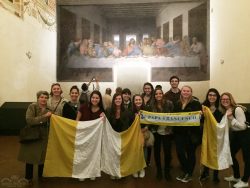 Students and Prof. Hoch in front of the Cenacolo, after having seen Pope Francis
Students and Prof. Hoch in front of the Cenacolo, after having seen Pope Francis